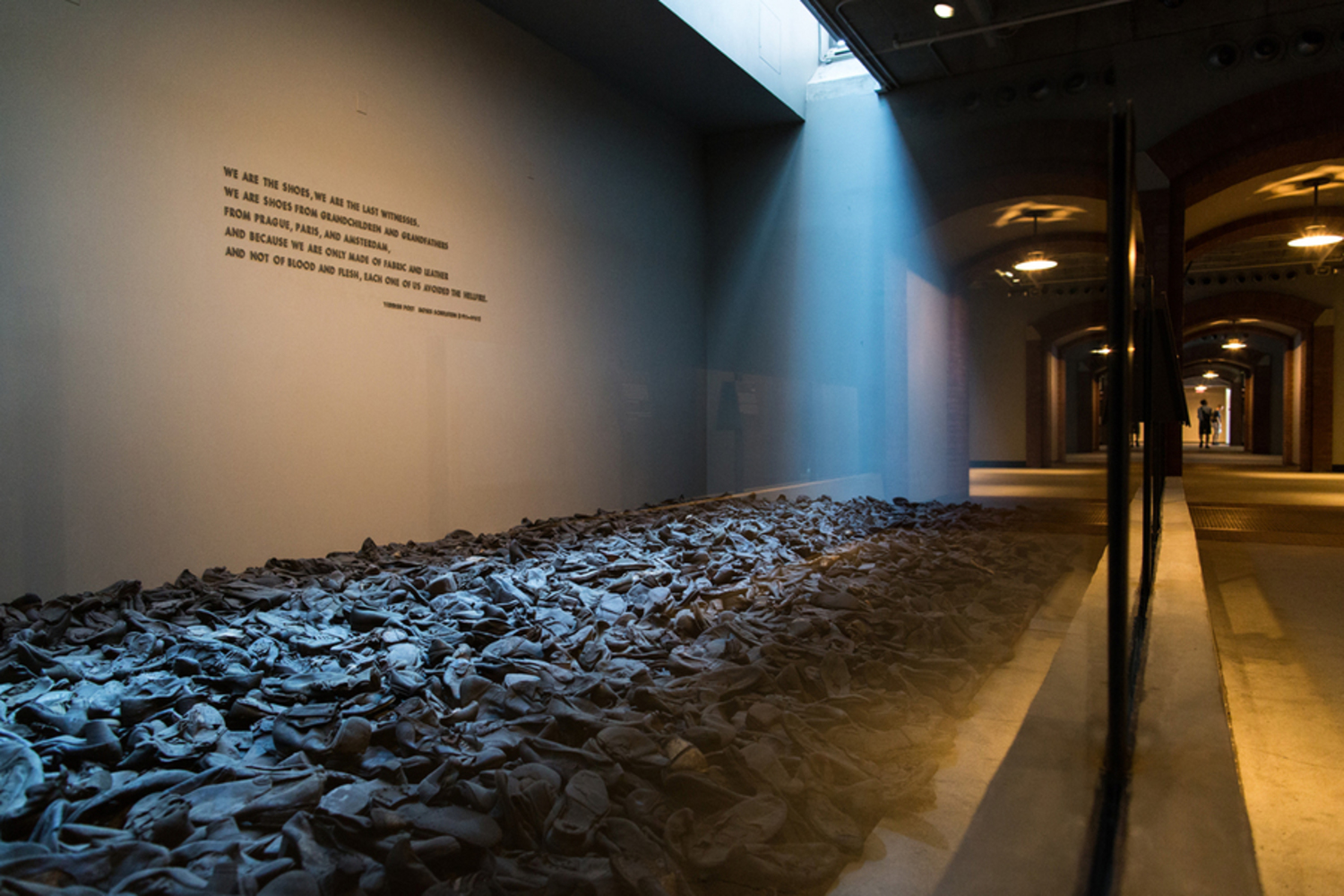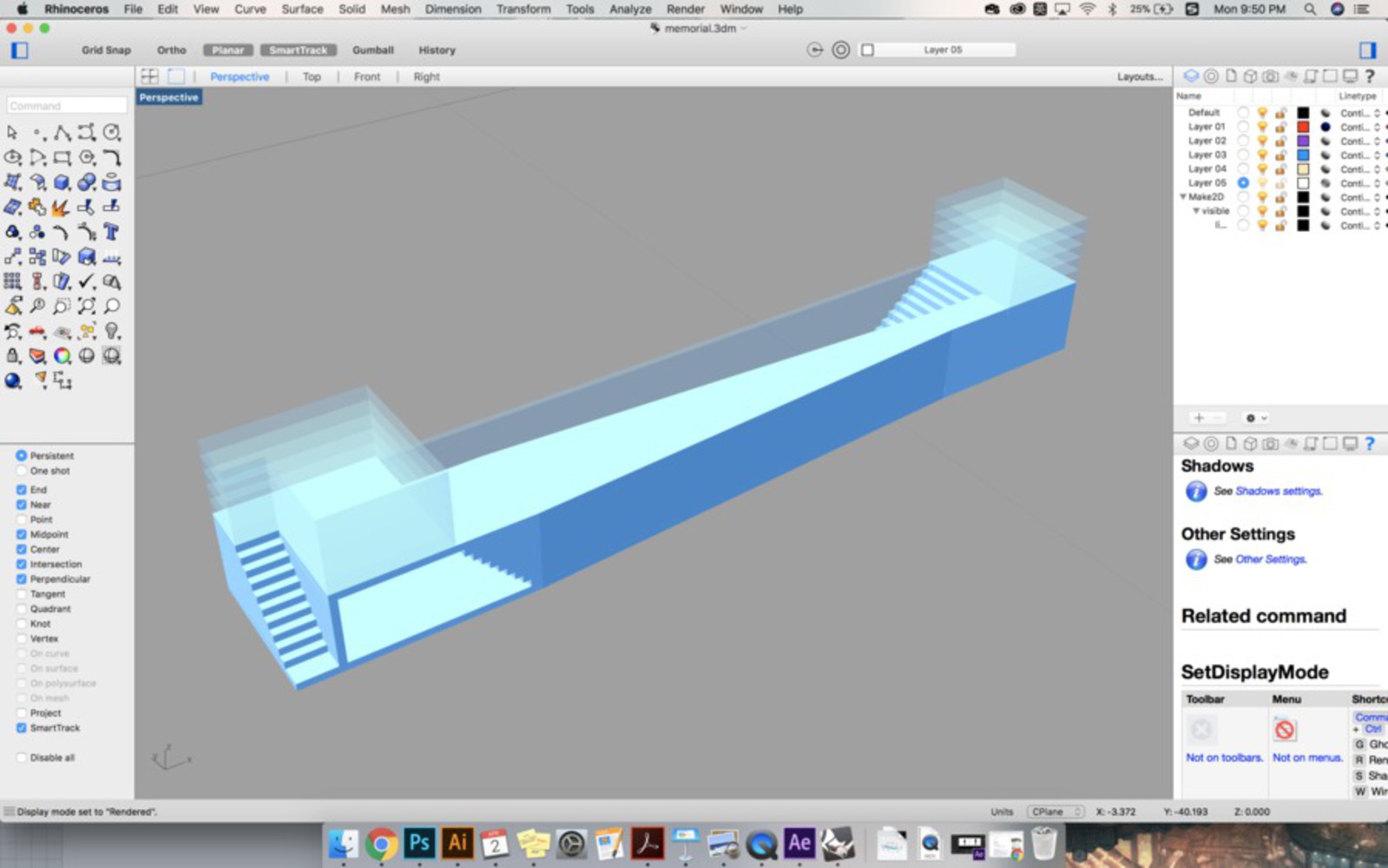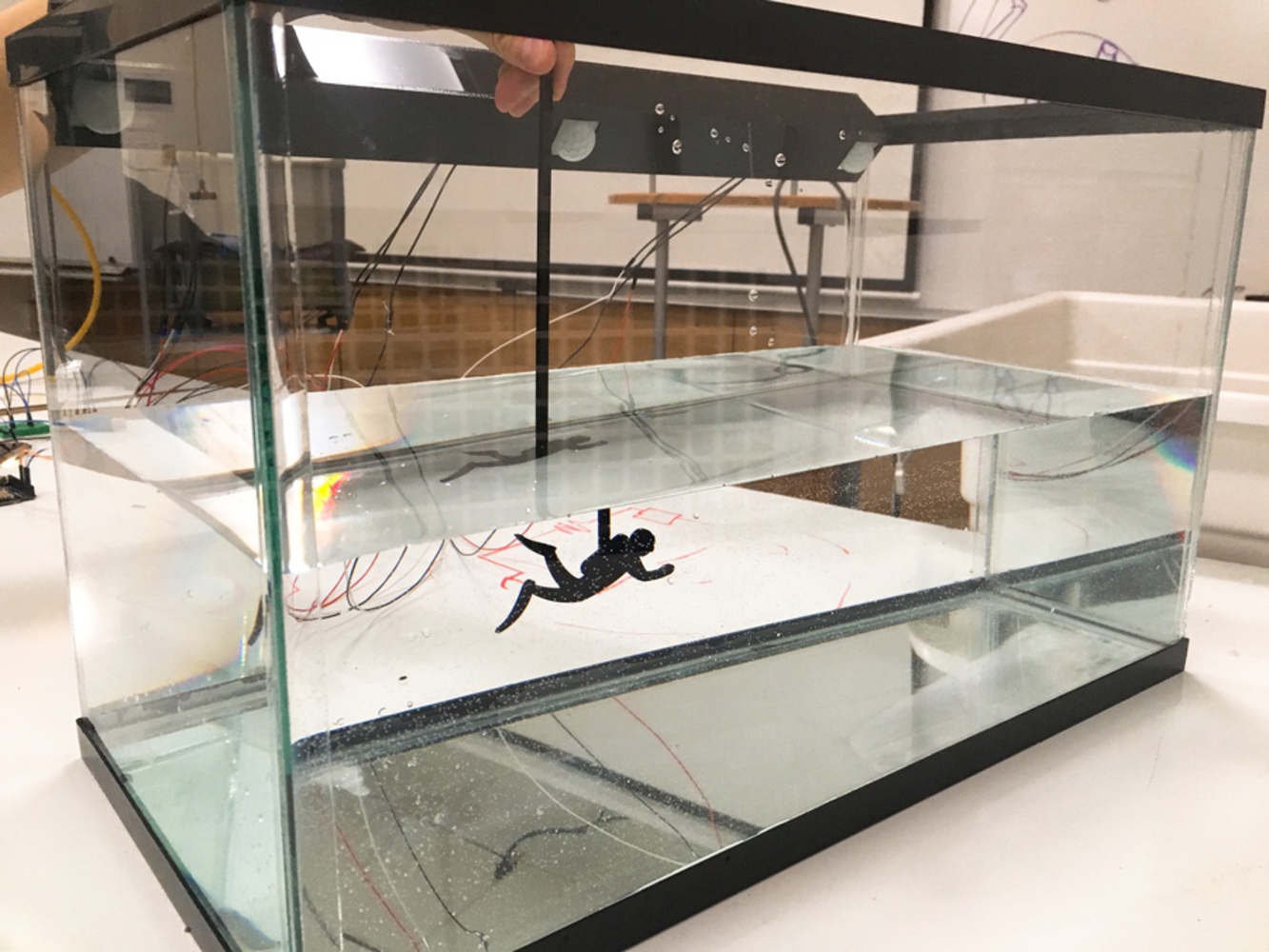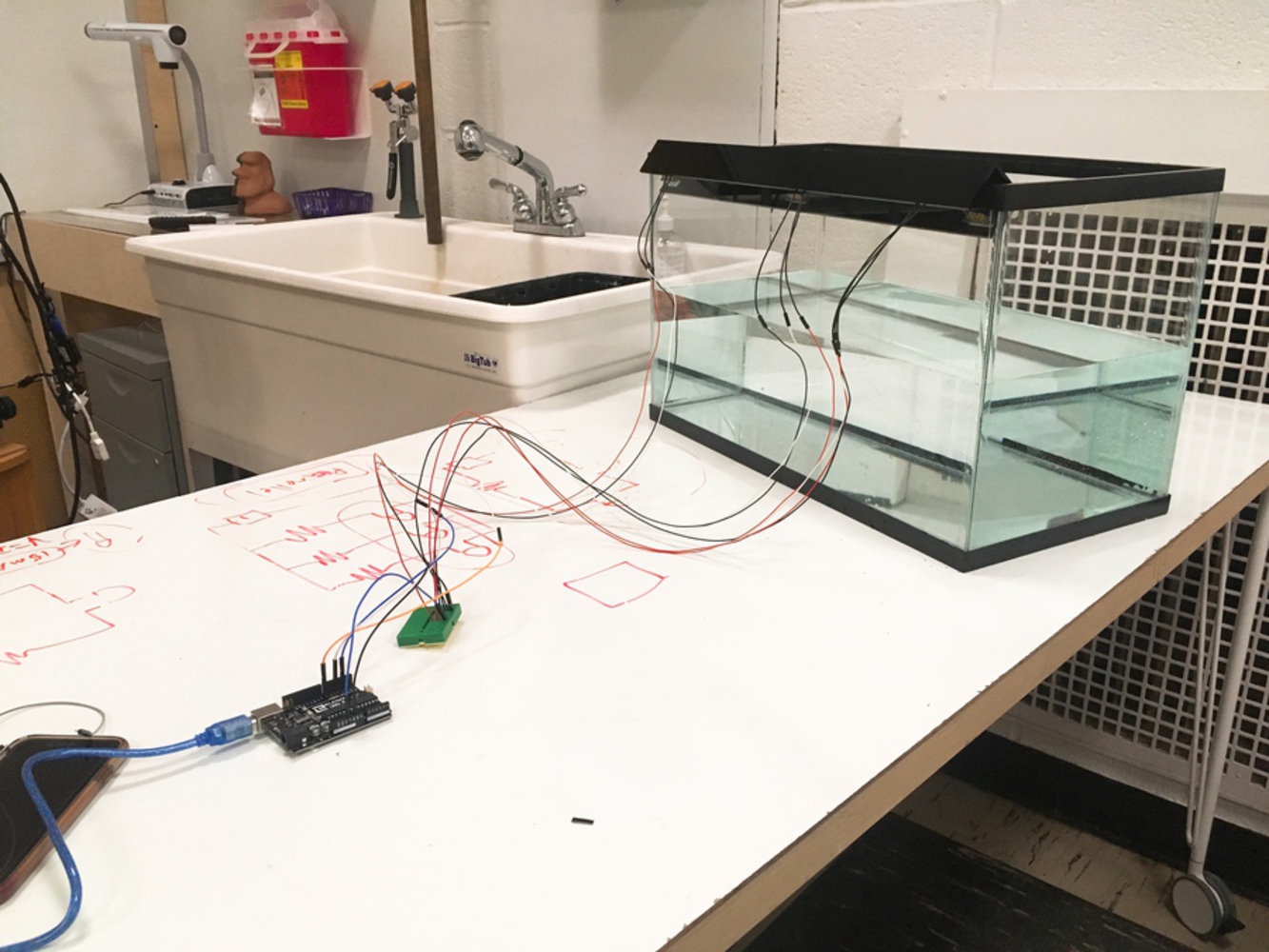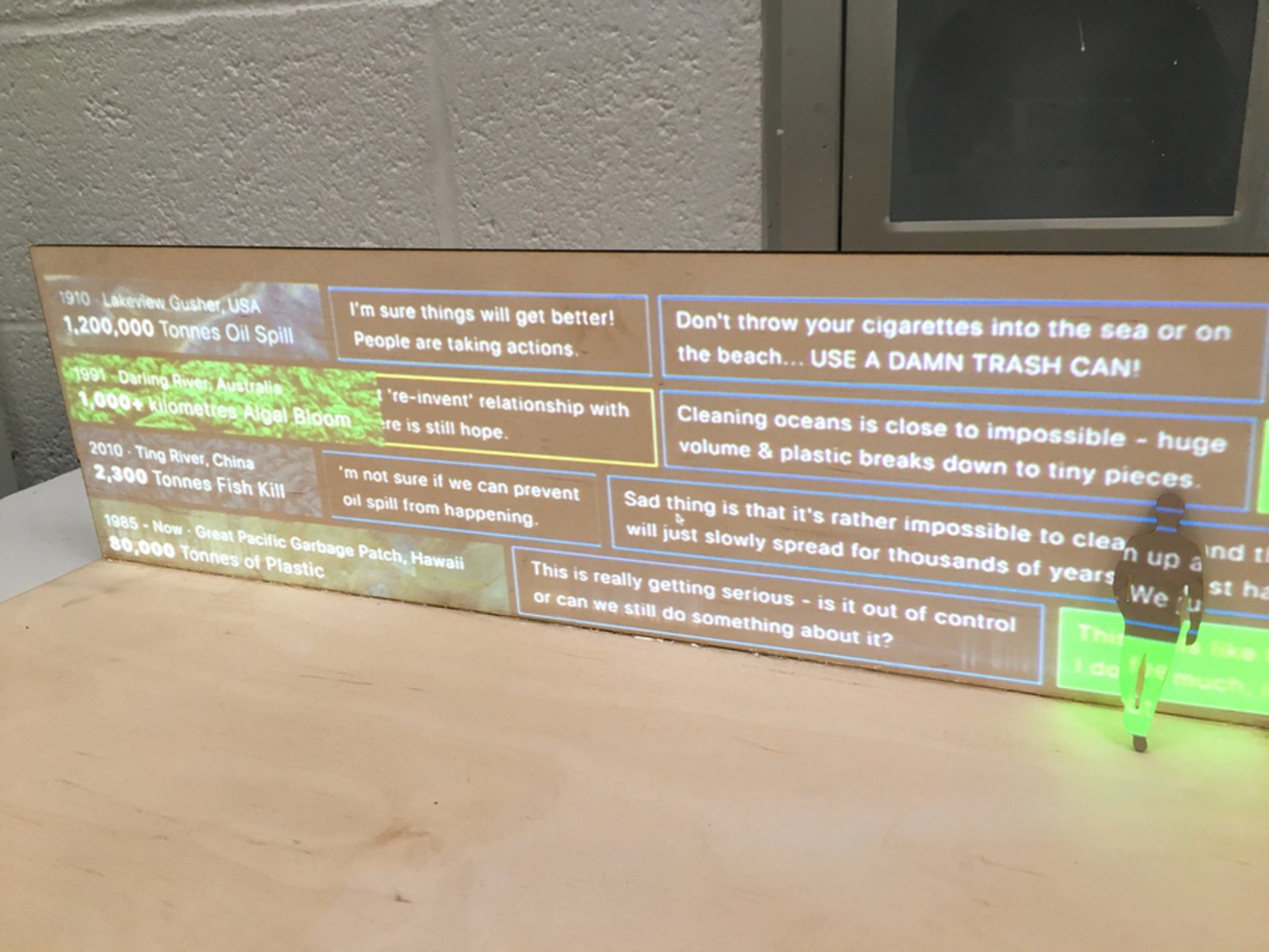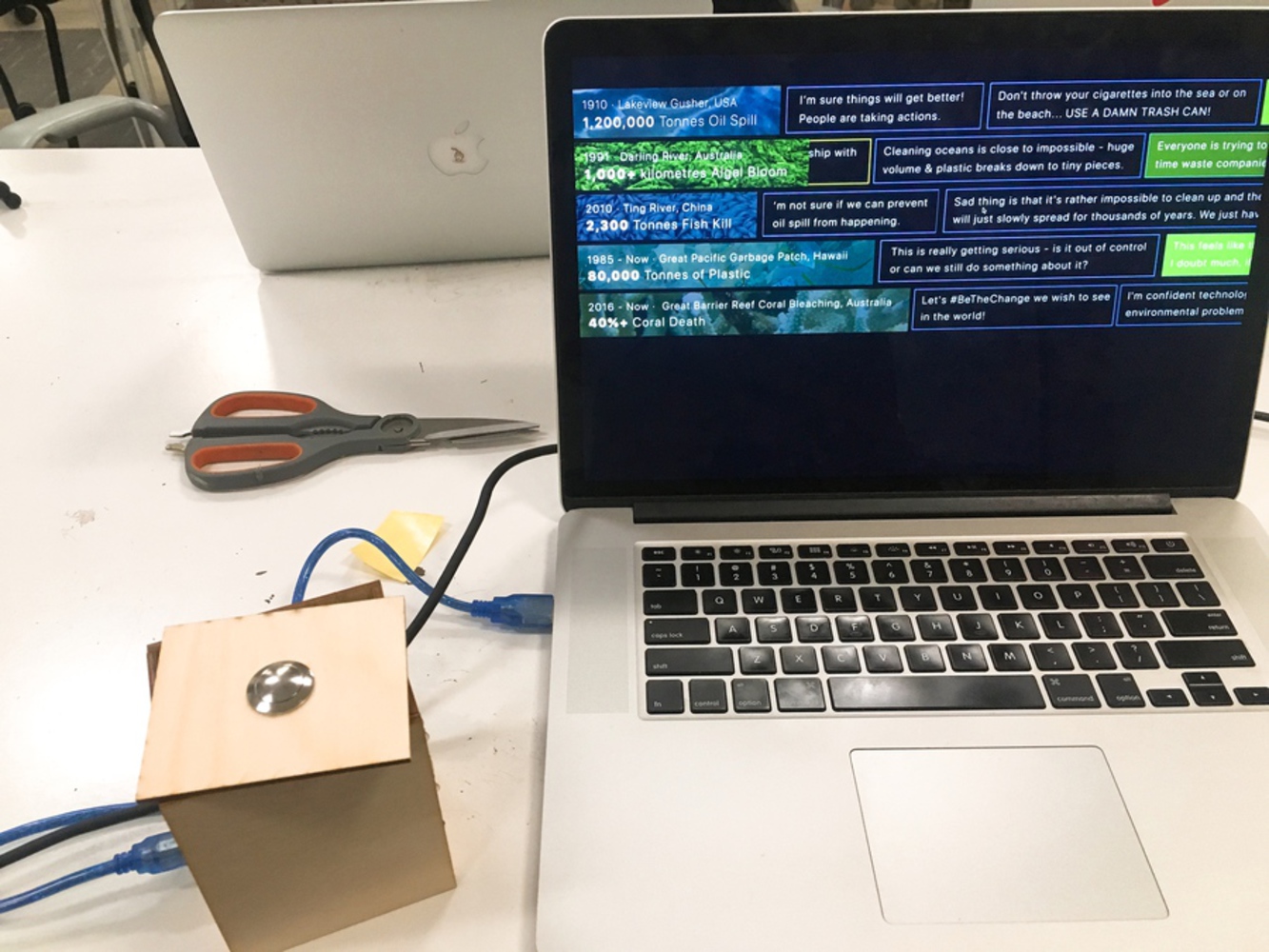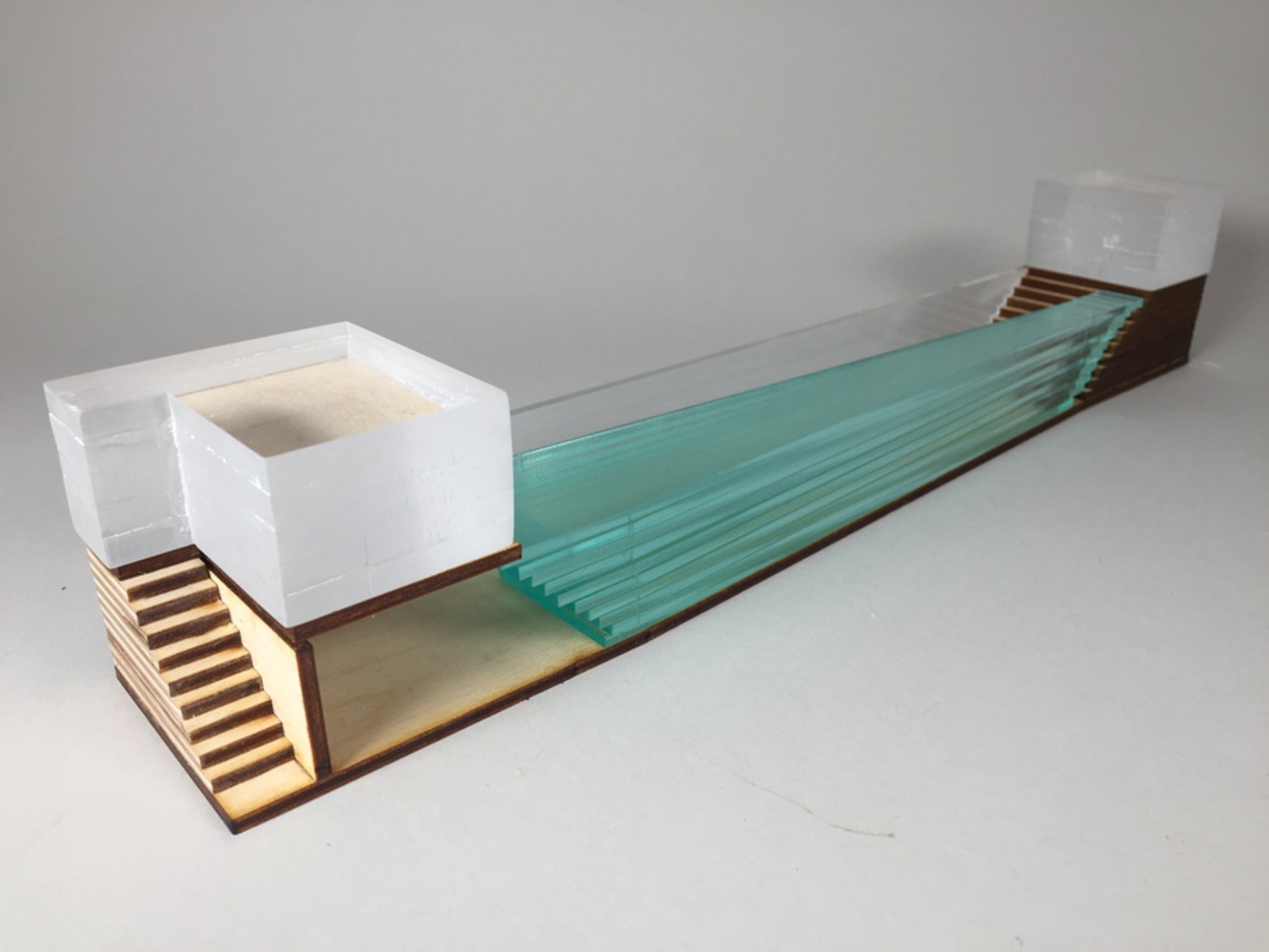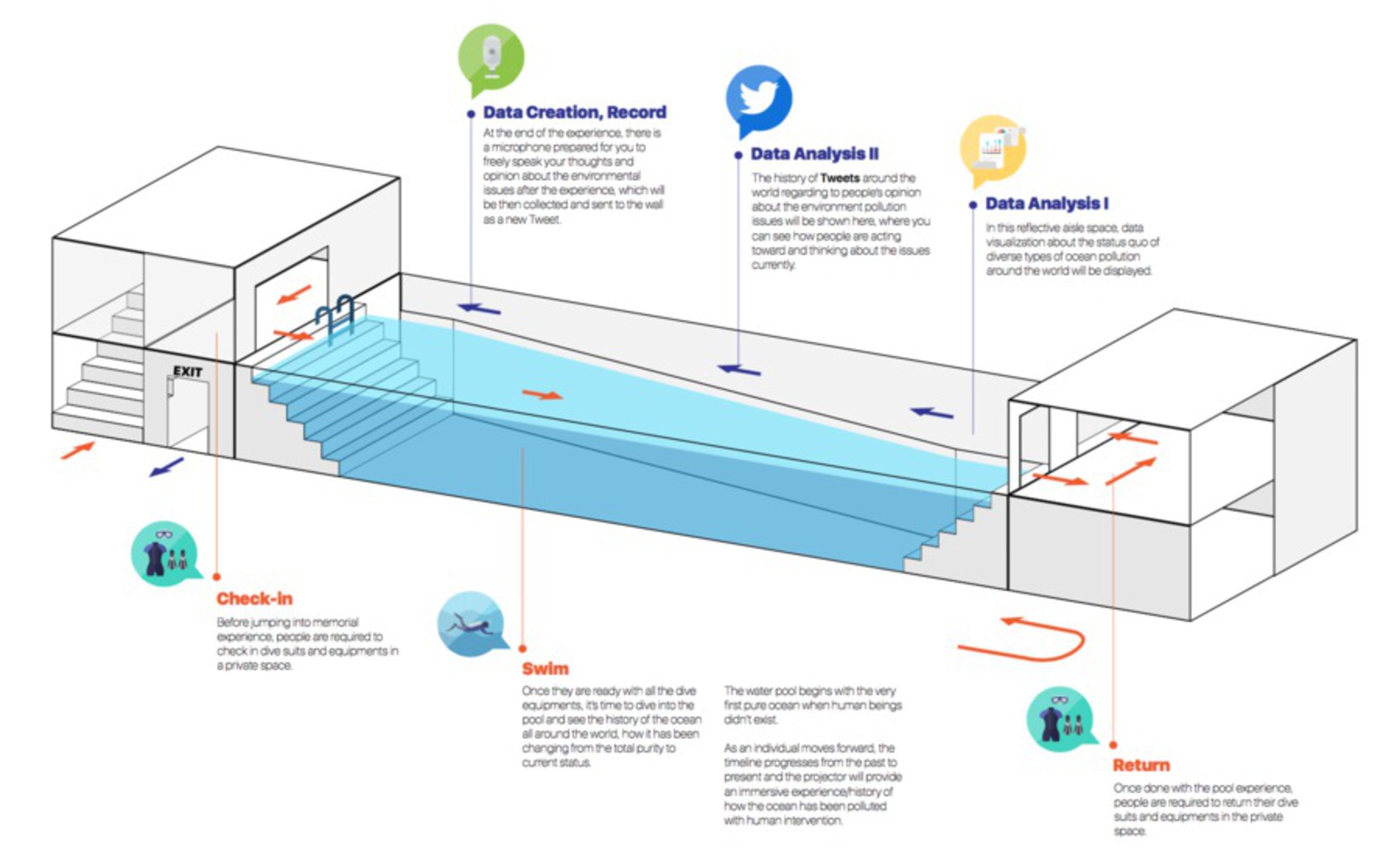Intention
Our project is centered around memorializing the "pure" and untouched by humankind Earth, specifically the oceans and various water sources which we associate with purity. Currently, there are large garbage patches of trash floating in the oceans, currents having pushed all of the trash together into great whirlpools of degrading plastic and junk. The most famous of these garbage patches is the Great Pacific Garbage Patch, which is currently theorized to be about the size of Texas and is only going to increase in size in the next ten years. While we currently do not see the repercussions of this trash build up in our daily life, we predict that in the next ten years our visions of giant, vast oceans that are too large for humans to alter will no longer exist, and we will see them as the cesspools we have caused them to be.
Our proposed memorial is an interactive exhibit that allows users to experience thousands of years of ocean history as well as the likely future of the oceans based on the current attitudes towards the problem. The form of the exhibit is two long pathways: the first of which is actually a pool where people can swim through to understand the history of the oceans, and the second is a hallway where people can walk through a "sea of data," understanding the facts and statistics as well as observing a Twitter wall that predicts what the future of the oceans look like based on the positivity and negativity of current day tweets.
